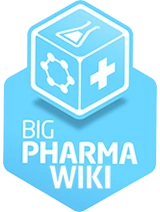Edit Page
The edit can be undone. Please check the comparison below to verify that this is what you want to do, and then publish the changes below to finish undoing the edit.
| Latest revision | Your text | ||
| Line 3: | Line 3: | ||
== Identifying side effects == |
== Identifying side effects == |
||
[[File:BP IngredFull.png|thumb|An example ingredient with three side effects.]] |
[[File:BP IngredFull.png|thumb|An example ingredient with three side effects.]] |
||
| − | Nearly all ingredients have side effects. The side effects in an ingredient are easily identified by their red concentration bars. In the example to the right, three side effects are listed: Narrows Pupils, Encourages Anxiety, and Urinary |
+ | Nearly all ingredients have side effects. The side effects in an ingredient are easily identified by their red concentration bars. In the example to the right, three side effects are listed: Narrows Pupils, Encourages Anxiety, and Urinary retention. At the import concentration of 19, only one of these effects is active, but any can be activated depending upon the processing steps that are performed on the ingredient. |
It is also important to note that [[Catalyst|catalysts]] are always part of a side effect, not a cure effect. In the example, we can see "Encourages Anxiety" is a Type 2 catalyst, while "Urinary Retention" is a Type 3 catalyst. When making a drug whose cure requires upgrades, if the upgrade requires a catalyst, the appropriate one will need to be present for processing. Often, this means adding a side effect - sometimes a very bad one - to the drug during processing in order to enable the cure upgrade. This is not necessarily a permanent problem, however, as side effects can be removed prior to packaging and sale of the drug. When attempting to maximize sales and reputation, doing so is highly recommended. |
It is also important to note that [[Catalyst|catalysts]] are always part of a side effect, not a cure effect. In the example, we can see "Encourages Anxiety" is a Type 2 catalyst, while "Urinary Retention" is a Type 3 catalyst. When making a drug whose cure requires upgrades, if the upgrade requires a catalyst, the appropriate one will need to be present for processing. Often, this means adding a side effect - sometimes a very bad one - to the drug during processing in order to enable the cure upgrade. This is not necessarily a permanent problem, however, as side effects can be removed prior to packaging and sale of the drug. When attempting to maximize sales and reputation, doing so is highly recommended. |
||
